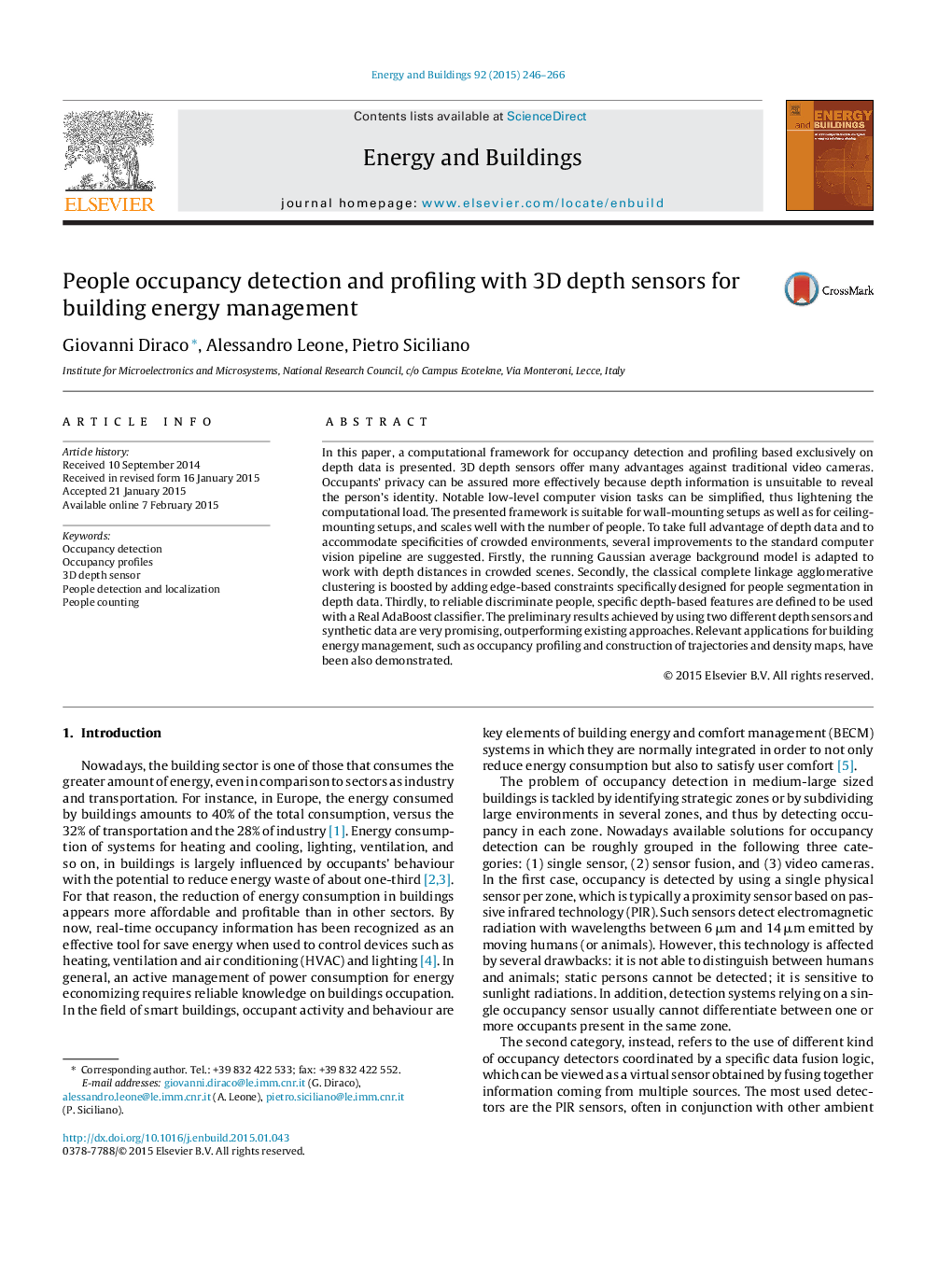| Article ID | Journal | Published Year | Pages | File Type |
|---|---|---|---|---|
| 6732097 | Energy and Buildings | 2015 | 21 Pages |
Abstract
In this paper, a computational framework for occupancy detection and profiling based exclusively on depth data is presented. 3D depth sensors offer many advantages against traditional video cameras. Occupants' privacy can be assured more effectively because depth information is unsuitable to reveal the person's identity. Notable low-level computer vision tasks can be simplified, thus lightening the computational load. The presented framework is suitable for wall-mounting setups as well as for ceiling-mounting setups, and scales well with the number of people. To take full advantage of depth data and to accommodate specificities of crowded environments, several improvements to the standard computer vision pipeline are suggested. Firstly, the running Gaussian average background model is adapted to work with depth distances in crowded scenes. Secondly, the classical complete linkage agglomerative clustering is boosted by adding edge-based constraints specifically designed for people segmentation in depth data. Thirdly, to reliable discriminate people, specific depth-based features are defined to be used with a Real AdaBoost classifier. The preliminary results achieved by using two different depth sensors and synthetic data are very promising, outperforming existing approaches. Relevant applications for building energy management, such as occupancy profiling and construction of trajectories and density maps, have been also demonstrated.
Keywords
Related Topics
Physical Sciences and Engineering
Energy
Renewable Energy, Sustainability and the Environment
Authors
Giovanni Diraco, Alessandro Leone, Pietro Siciliano,
